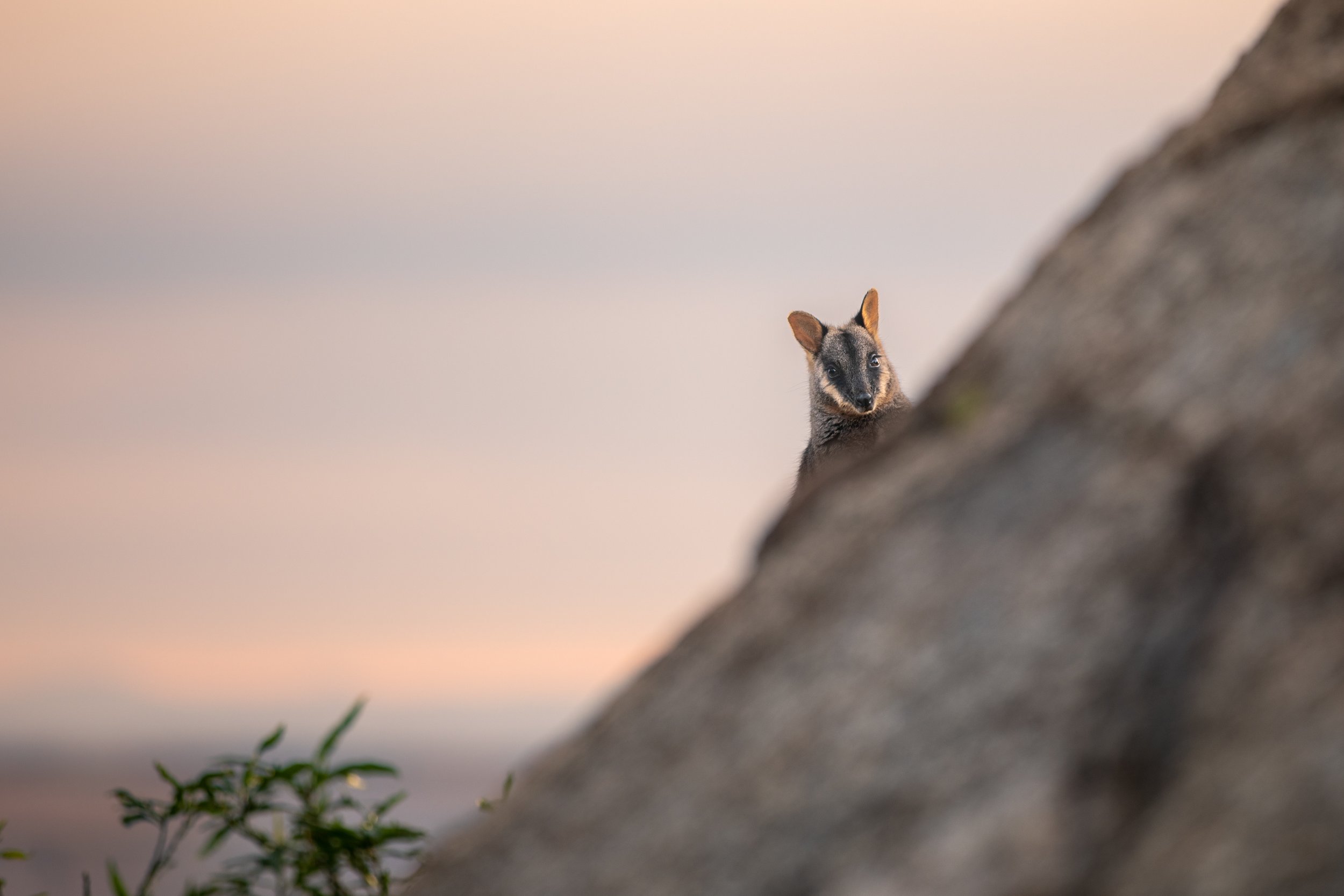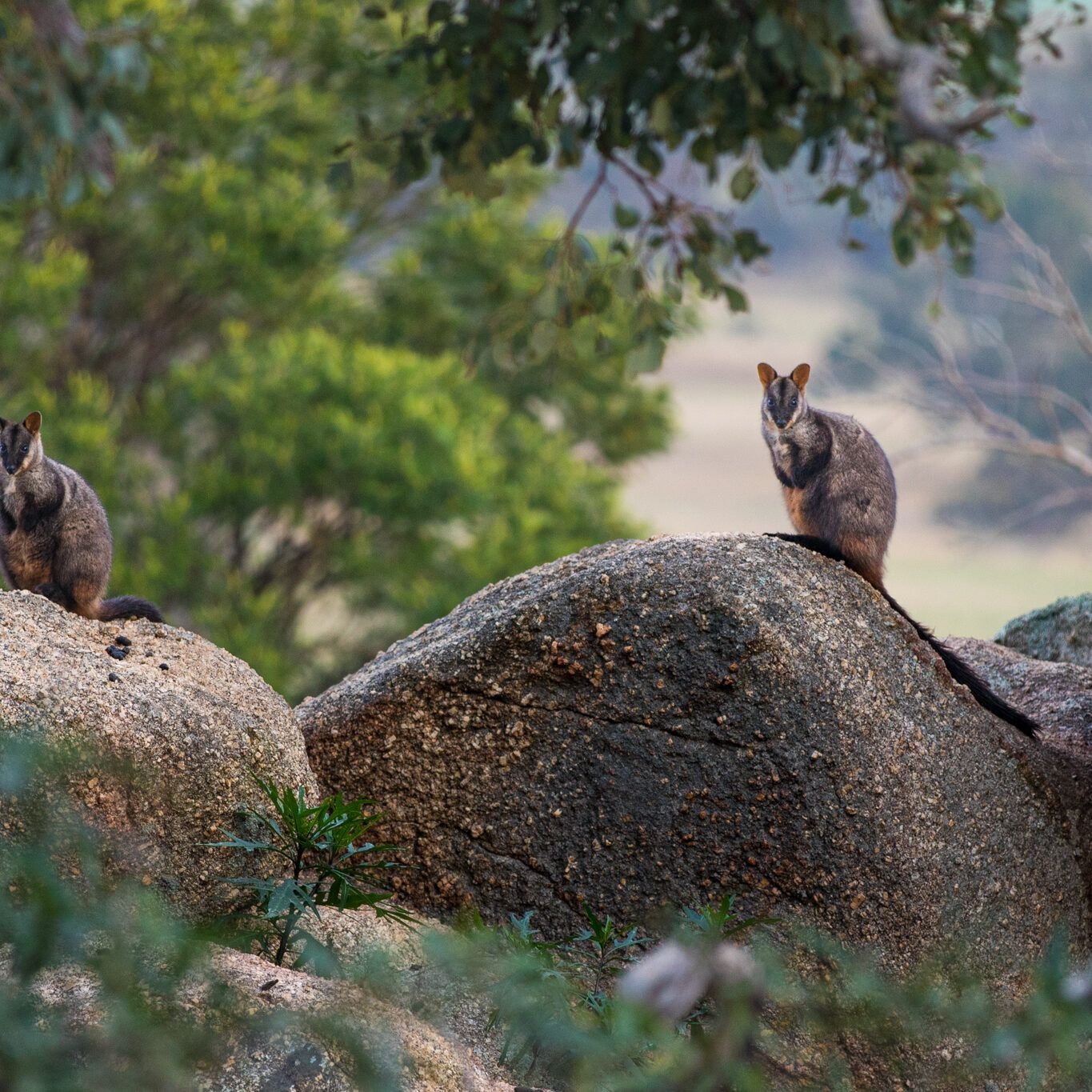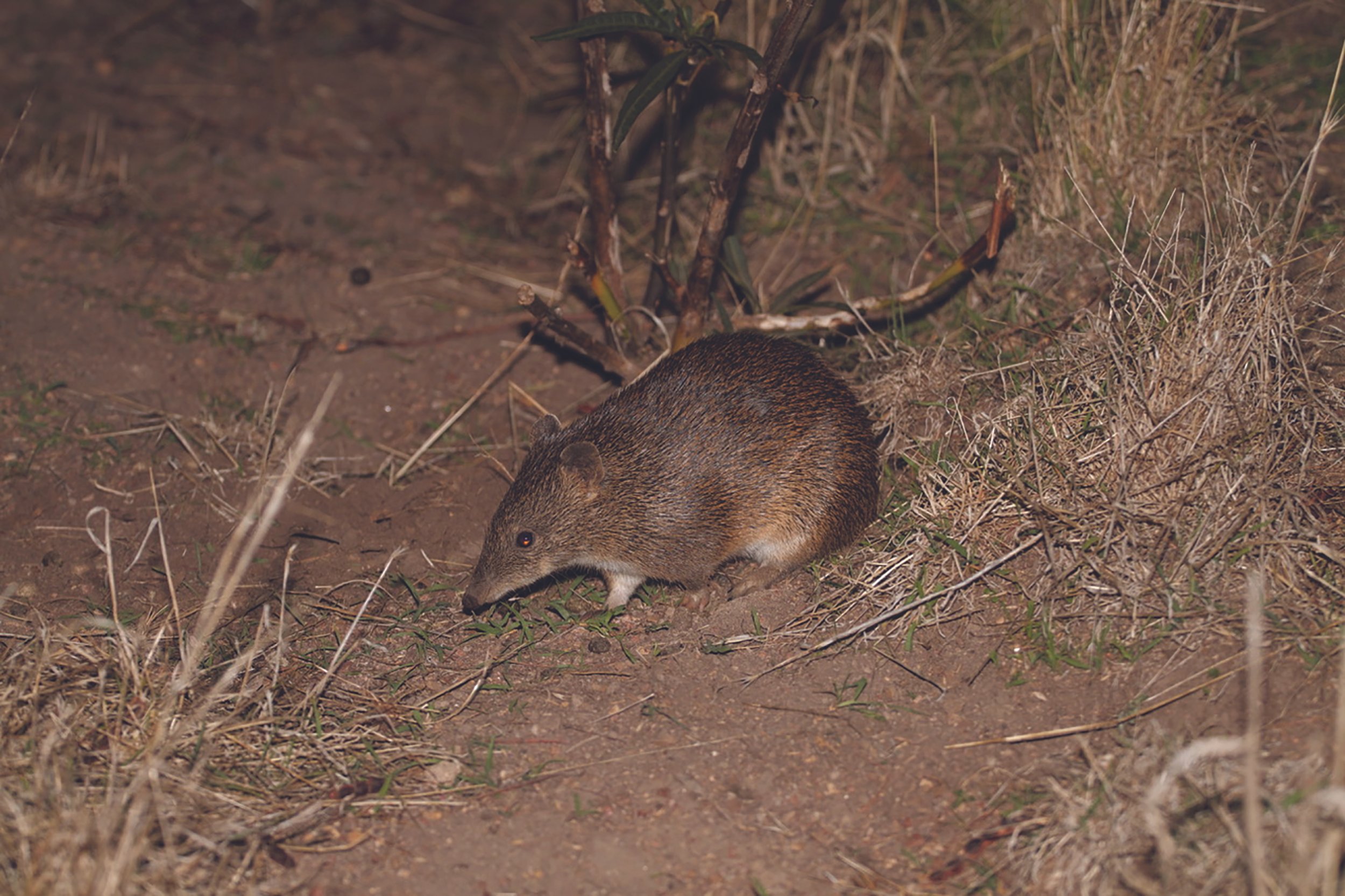
SPOTLIGHT
SPECIES
9 core species
We have set our sights on recovering 9 Core Species over the coming decade, so that resources can be targeted, and impact can be quantified.
We are working concurrently to rebuild genetic resilience in each population, create and maintain feral-free habitats for animals to recover, and support healthy populations at multiple sites to insure against the increasing threat of climate related disasters such as fire, flood and drought.
Bush stone-curlew
Burhinus grallarius
The bush stone-curlew is a ground-dwelling, nocturnal bird whose haunting cries were once heard across most of Australia. With numbers drastically reduced in the southeast and the bird now listed as Critically Endangered in Victoria, Odonata is spearheading efforts to bring this distinctive, native bird back to places where it once thrived. Learn more.
Conservation status:
VIC: critically endangered (1988 FFG Act)
NSW: endangered
SA: vulnerable
Eastern barred bandicoot
Perameles gunnii
The eastern barred bandicoot is a small marsupial native to southeastern Australia. Once declared Extinct in the Wild, it now survives in reintroduced populations, with Odonata’s safe haven network supporting around 80% of the mainland population. As a natural digger, it plays a key role in soil health and seed dispersal. Learn more.
Conservation status:
Mainland: endangered (1988 FFG Act)
Tasmania: vulnerable
Eastern bettong
Bettongia gaimardi
The eastern bettong is a small marsupial native to Australia. Once widespread across southeastern Australia, it now survives only in Tasmania and in reintroduced populations on the mainland, notably at Odonata’s Mt Rothwell Sanctuary. Known as an ecosystem engineer, this species is important for soil health and plant diversity. Learn more.
Conservation status:
Mainland: regionally extinct (1988 FFG Act)
Tasmania: endangered
Eastern quoll
Dasyurus viverrinus
The eastern quoll is a carnivorous marsupial. Once widespread across southeastern Australia, Eastern quolls are now extinct in the wild on the mainland and survive only in Tasmania where they are endangered. Odonata’s safe haven network holds two of only three wild, self-sustaining populations on the mainland. Learn more.
Conservation status:
Mainland: regionally extinct (Advisory List of Threatened Vertebrate Fauna in Victoria)
Tasmania: endangered
Long-nosed potoroo
Potorous tridactylus
The long-nosed potoroo is a small nocturnal marsupial native to Australia. This species is integral to Australian ecosystems, aiding in seed dispersal and fungal spore distribution. However, habitat loss, foxes, feral cats, and other threats have placed it at risk of extinction. Learn more.
Conservation status:
VIC: vulnerable (1999 FFG Act)
Rufous bettong
Aepyprymnus rufescens
The rufous bettong is a nocturnal marsupial once widespread across Australia. Now limited to parts of Queensland and New South Wales, it disappeared from Victoria in the early 1900s. Habitat loss and predators drove its decline, but a healthy population at Odonata’s Mt Rothwell Sanctuary supports its conservation. Learn more.
Conservation status:
VIC: presumed extinct (1988 FFG Act)
NSW: vulnerable
Southern brown bandicoot
Isoodon obesulus
The southern brown bandicoot is an endangered marsupial native to southeastern Australia. Vital for soil health and insect control, its numbers have declined due to habitat loss and predation. Odonata’s Mt Rothwell Sanctuary currently protects a key population of southern brown bandicoots. Learn more.
Conservation status:
VIC: endangered (1999 EPBC Act)
Spotted-tailed quoll
Dasyurus maculatus
The spot-tailed quoll, or tiger quoll, is mainland Australia’s largest carnivorous marsupial. As an apex predator, it helps maintain ecosystem balance and signals environmental health. A few live at Odonata’s Mt Rothwell Sanctuary, alongside an established eastern quoll population. Learn more.
Conservation status:
Australia: endangered (1999 EPBC Act)
Southern brush-tailed rock-wallaby
Petrogale penicillata
The southern brush-tailed rock-wallaby faces threats from habitat loss, predators, and resource competition. Conservation efforts focus on habitat restoration, predator control, and breeding programs. As a herbivore, it shapes vegetation dynamics, influencing plant growth and biodiversity in its ecosystem. Learn more.
Conservation status:
Australia: critically endangered (1988 FFGA Act)

Beneficiary
species
Creating large predator-proof zones benefits entire ecosystems, not just the threatened species they protect. As safe havens expand, nature begins to heal, native grasslands regenerate, birdlife flourishes, and rare species return.
For example, efforts to recover the eastern barred bandicoot have also safeguarded one of the world’s most threatened ecosystems, the Victorian Volcanic Plains Grasslands. These habitats support rare flora like the Spiny Rice Flower and native orchids, as well as endangered species such as the growling grass frog, brolga, and barking owl.
So far, Odonata has improved the trajectory of over 20 target fauna species including:
koala, black falcon, wedge-tailed eagle, brown tree creeper, magpie goose, alpine bog skink, fat-tailed dunnart, gang-gang cockatoo, coastal emu, greater glider, yellow-bellied glider, squirrel glider, brush-tailed phascogale, eastern chestnut mouse, varied sitella, little lorikeet, black bittern, and square-tailed kite.
Photography by Annette Ruzicka, Pete James. Videography: Emily Vines.








